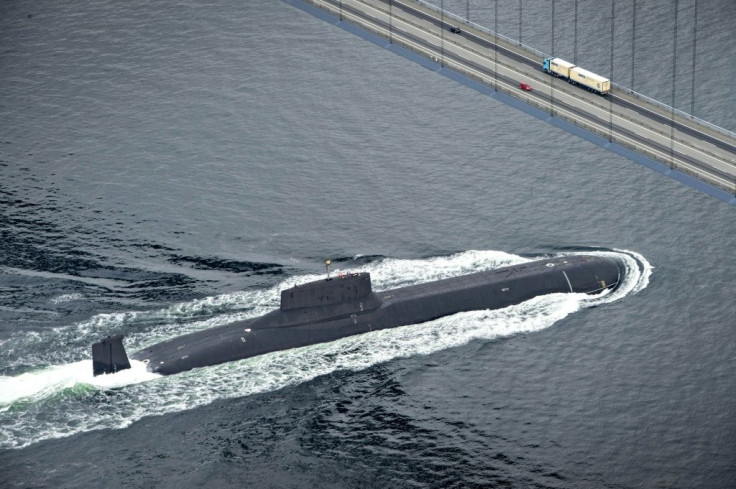Amid Ukraine's Counteroffensive, Russia Attempted To Test 'City Killer' Drone: Report
KEY POINTS
- The tests attempted involved a modified submarine that is the first carrier of Poseidon drone
- With inbuilt miniature nuclear propulsion system, Poseidon is believed to have limitless range
- West is monitoring any preparations by Russia for the use of nuclear power in the Ukraine war
Amid Ukraine's successful counteroffensive, Russia reportedly attempted a test of its new nuclear-powered torpedo involving the Belgorod, a modified cruise missile submarine capable of launching unmanned underwater vehicles, including a deadly drone nicknamed the "city killer".
A CNN report from Thursday cited a senior U.S. official who said Russian naval vessels were seen leaving a testing area in the Arctic Sea last week and returning to port without carrying out the test.
According to the report, U.S. officials believe Russia may have aborted the test due to technical issues and could try to test the torpedo again. But, as the Arctic waters in the testing zone freeze during the winter, the window of opportunity available to the Russian navy is very limited.
As reported earlier, NATO intelligence issued a similar warning that the K-329 Belgorod, which is known for its ability to launch the Poseidon drone, had left its base in the White Sea beyond the Arctic Circle in preparation for a series of secret tests.
It is unclear if the latest report is related to the same NATO warning, which was issued in early October.
According to the NATO alert, Russia's nuclear submarine Belgorod had left its base in the Arctic Circle and was heading to the Kara Sea, off the coast of Russia's Novaya Zemlya island to conduct a series of secret tests that involved the Poseidon torpedo.
News about the movement of the nuclear-powered submarine is significant because it is believed to be the longest submarine in the ocean today. Although the vessel's exact specifications remain unknown, Defense analyst H.I. Sutton's writing in the Naval News estimated it to be 178 meters (584 feet) long and about 15 meters (49 feet) wide.
With a displacement of over 19,000 tons, the Belgorod is believed to be bigger than the largest Western submarine, the U.S. Ohio-class.
The Belgorod was delivered to the Russian Navy in July and is the first carrier of Poseidon, Russia's nuclear-armed unmanned underwater torpedo drone capable of carrying both conventional and nuclear munitions.
The drone is nicknamed "city killer" for the radioactive tsunami it can cause to inundate coastal cities, and is also referred to as the "doomsday drone" or "the weapon of the Apocalypse."
In February 2019, the Russian Defense Ministry released the first-ever video showing an underwater "field test" of the Poseidon, a huge robotic nuclear-capable mini-submarine with an inbuilt miniature nuclear reactor.
Given its nuclear propulsion system, the Poseidon is believed to have a limitless range.
Video of Russian Poseidon underwater nuke drone ‘field-test’ released by Defense Ministry
— RT (@RT_com) February 21, 2019
Details: https://t.co/ZDIImXymQb pic.twitter.com/ujoUC4pBdG
With the "field test" phase complete, the Poseidon weapon system is ready and is meant to be carried by a regular manned submarine like the Belgorod.
Although the U.S. does not believe Russia would have detonated a nuclear device during the test, the CNN report points out that a potential risk could come from the malfunctioning of the torpedo's nuclear propulsion system, posing danger from radioactivity.
Had the reported test been successful, it would have further heightened tensions between Russia and the West who are carefully monitoring any preparations for the use of nuclear weapons in the Ukraine war, with particular attention to any possible tests of the Poseidon.
Although Russian President Vladimir Putin issued a veiled warning in September and Moscow escalated the threat, Washington has said it does not see indications of a current threat.

© Copyright IBTimes 2024. All rights reserved.






















